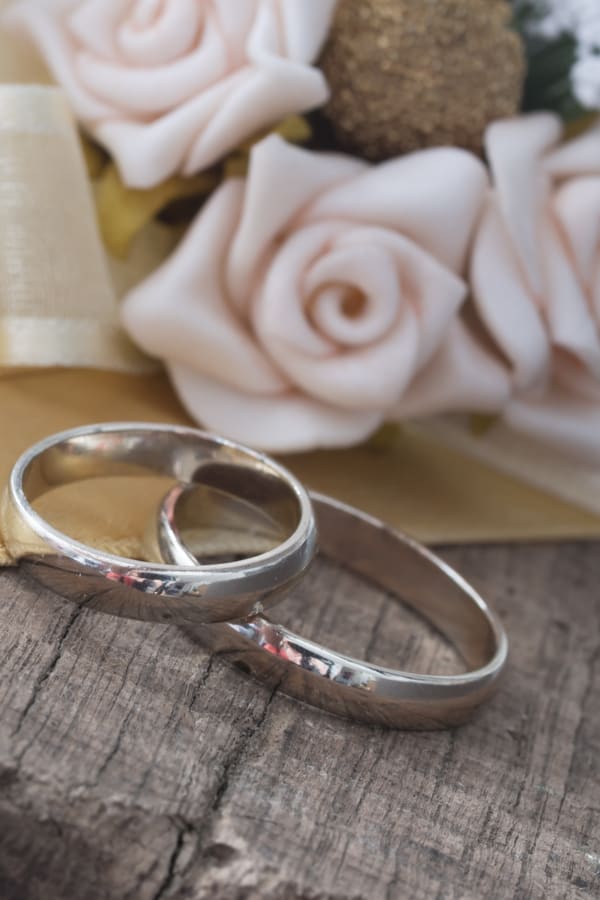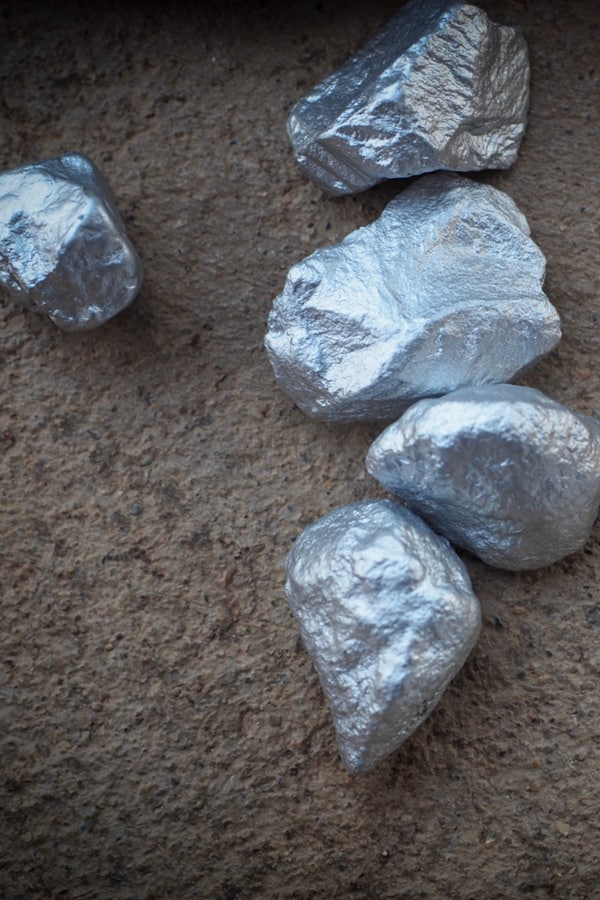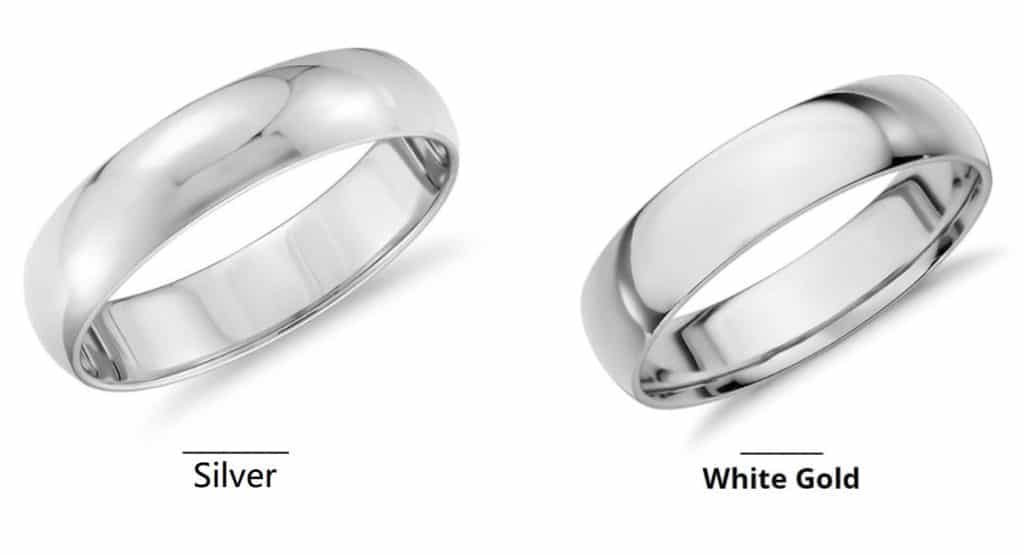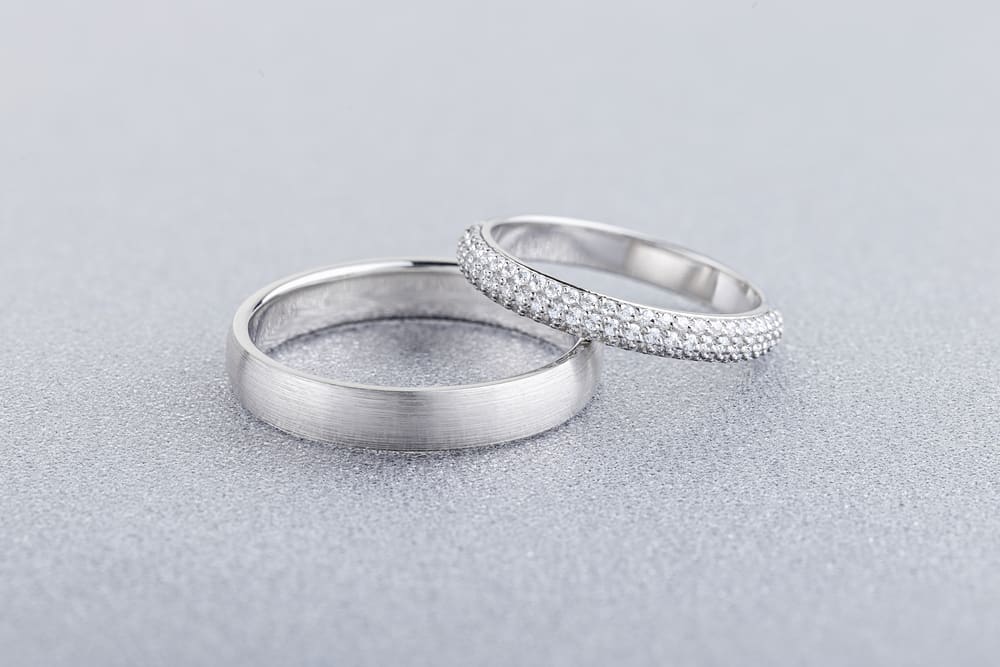Choosing between white gold and silver is not always easy because both metals are attractive and look rather similar. But despite their initial appearances, there are several characteristics that set them distinctively apart.
Ultimately, the metal you pick will solely depend on what you prefer, your budget, and the jewelry type you are looking for. Here is an in-depth comparison of white gold vs silver to help you with your decision.
What is White Gold?

White gold is simply a gold alloy obtained from mixing pure gold with other metals like zinc, nickel, and palladium. The blending is primarily meant to strengthen the product and give it the white/gray hue.
Usually, the higher the concentration of metals, the whiter the gold will be. Also, higher metal content means the gold is less pure. Gold purity is measured in Karats (K), with white gold being mostly between 10K and 16K.
The exact characteristics of white gold will depend on the type of metal alloys added to it as well as the amount of each alloy.
16K white gold will typically be in high demand because it has more gold, but some people will prefer 10K gold because it is more affordable. A higher amount of metals also mean that the product is more durable.
What is Silver?

Silver is yet another precious metal that people have used for centuries for jewelry, tableware, batteries, and electrical contacts. As with gold, silver in its pure form is relatively soft, thus, it is mixed with other metal alloys like copper or nickel to make it stronger.
When silver is combined with other metals, it is referred to as sterling silver. You have probably bought a piece of jewelry and noticed a ‘925’ stamp on the side or a label reading ‘sterling silver’.
Usually, sterling silver contains 92.5% of pure silver, and the remaining percentage is made of other metals. This is where ‘925’ comes from.
Since silver and copper are not allergic, products made of these two are excellent for people with skin allergies. It is worth noting, however, that any product with copper will likely oxidize over time, so make sure your sterling silver jewelry is polished occasionally to avoid discoloration.
When to Use White Gold or Silver
Both white gold and silver can be used in many instances, and knowing exactly why you are buying products made of these metals can help you make an informed purchase. Your choice may also vary depending on the person you are buying it for.
Are you buying it for yourself, your significant other, or a friend? Is it for an anniversary, a birthday, or a graduation gift?
The color of white gold and silver best suits people with cooler skin tones. But it can be flattering and look good on anyone. It all boils down to the style of the person you are buying it for and what they prefer.
White gold and silver can be paired with many colors and gems like pearls, crystals, and turquoise. They will make gorgeous rings, earrings, and bracelets for ceremonies and daily wear.
Difference Between White Gold and Silver

Now that you know what white gold and silver are made of and how they can be used, let’s look at some of the unique attributes that make the two metals different from each other.
Cost
White Gold
White gold is more expensive than silver but cheaper than platinum. If you want a piece of jewelry with a platinum look but can’t swing the cost, white gold would be a fantastic alternative.
However, the cost of white gold will vary based on the quantity of pure gold in the product. The higher the amount, the more valuable the piece will be considered and the higher it will cost.
Silver
Silver is the most cost-effective of the two metals and that’s partly because there is a greater supply of the metal than there is of gold.
Due to its lower cost, silver is excellent for costume jewelry and daily pieces. In fact, at one time in history, silver had a higher value than gold.
Durability
White Gold
If you are buying a product that you will wear every day like a ring or bracelet, white gold would be a much better option for long-lasting sturdiness. Thanks to the protective coating of rhodium, white metal jewelry is also more resistant to wear and scratches.
However, it is important to remember that the durability of white gold will be dependent on the amount of pure gold used to make the product you are buying. That said, the strongest and most durable white gold will be the one with the lowest karat settings because it has the highest concentration of alloy metals.
Silver
Pure silver is not strong enough to endure the day-to-day wear of jewelry products. That is why a sturdier variation, the sterling silver, is the best choice for jewelry. The extra metals like copper and nickel significantly increase the product strength, making it more durable.
If you are looking to invest in silver jewelry, consider the pieces made of sterling silver if you hope to have it for a long time. Plus sterling silver doesn’t tarnish or scratch easily, meaning, with regular cleaning and maintenance, your jewel can shine throughout your lifetime.
Color
White Gold
One of the reasons most people love gold is its brilliant white color. This color comes from blending pure yellow gold with other metals. The extra layer of shine comes from the rhodium plating added to increase the lifespan of the product.
Silver
The color of silver will depend on its composition. Since silver jewelry has a high percentage of silver, the grayish-white hue is more dominant.
The overall look of a product made of silver will be shiny, white, and lustrous. However, due to the reaction of silver with hydrogen sulfide present in the air, jewelry made from this metal will become dull when it tarnishes.
Maintenance
Whether you choose white gold or silver, your jewelry will not keep its shine forever and will require regular care and maintenance.
White gold
As mentioned, white gold usually comes with a rhodium coating. Rhodium belongs to the platinum family and is one of the best metals to keep jewelry from scratching.
Over time, the coating may change from grayish-white to dull yellow. To avoid this, you will need to have a jeweler reapply the coating every few years. Nevertheless, white gold is a much better option for everyday jewelry because it keeps its shine longer.
Silver
A jewelry piece made of silver will require cleaning and polishing more frequently to prevent it from tarnishing.
The good news? You don’t need to take your jewelry to a professional; you can clean your silver at home using products from your kitchen like vinegar, lemon juice, and corn starch.
Skin Sensitivity
Both white gold and silver are combined with other metals before creating jewelry. One of the metals used on both occasions is nickel, and as effective as it may be in jewelry production, nickel has been found to cause allergies and itchy rashes in people with skin sensitivity. If you have problematic skin, it is wise to first check whether the product you want to buy contains nickel.
White Gold
Although nickel is a common metal in white gold, you will probably not have to worry about it until when the rhodium coating begins to wear out, as that’s when nickel will likely be exposed to your skin.
Silver
Lower-quality sterling silver will sometimes have some nickel in it. However, the most commonly used alloy in sterling silver jewelry is copper, which is typically hypoallergic. Silver products are, therefore, a much better option for people with skin allergies.
How to Visually Differentiate White Gold from Silver

Because white gold and silver look so similar, it can be difficult to tell which is which especially if you haven’t dealt with any of the metals before. Here are a few tips that can help you avoid mixing them up:
- If there is any gray or white discoloration, you are most likely dealing with silver.
- Look for hallmarks. Both white gold and silver come with stamps to show the purity of the metal. If the jewel item is marked with a number followed by the letter K, for instance, 14K or 16K, then it is gold. Silver jewelry will have an inscription reading ‘Sterling Silver’ or ‘925’.
- Do you see any gemstones? If so, you are likely dealing with white gold. Most silver jewelry won’t have expensive or intricate settings. If in doubt, check the hallmarks.
Advantages and Disadvantages of White Gold and Silver
While the comparison made in this post can help you decide whether white gold is better than silver, we have laid out below some pros and cons of each metal to further help you with your buying decision.
White Gold
Pros
- White gold is durable, strong, and perfect for everyday wear.
- The hard rhodium coating prevents the white gold alloy from being exposed, which helps lengthen a product’s lifespan.
- White gold is a good investment; with proper care, it can maintain its value for a long time.
Cons
- White gold containing nickel alloy can cause skin irritations in people with metal allergies and skin sensitivities.
- Unless provided free by your jeweler, reinstalling the rhodium coating can be expensive. Plus it takes effort.
Silver
Pros
- Silver is very cost-effective.
- The metal can be used both for costume jewelry and for more high-end products.
- Due to the high concentration of the metal, silver tends to have more shine and luster.
- Some people love the unique patina that silver develops over time due to oxidation. It can be used to create beautiful contrasts and patterns on the jewelry item.
Cons
- Sterling silver products containing nickel can cause allergies in people with sensitive skin.
- Since silver tarnishes quickly, maintaining jewelry items made of this metal is much harder than those made of white gold. Silver products need to be cleaned and maintained more regularly.
Should You Choose White Gold or Silver?
In the end, whether to choose white gold or silver will be totally up to you, what you like, and how much you are willing to spend. Think about your reasons for buying. Are you looking for something to wear every day? Is it an investment piece? Does the product have emotional value?
Considering these questions will help you know exactly what you need and compare the two metals in a manner that will enable you to pick the best.
If you are looking for pocket-friendliness, then silver would be an excellent option. It is also perfect for people with skin sensitivity. Just remember, unlike white gold, silver jewelry will require more care and maintenance to keep its shiny finish.
White gold, on the other hand, is more expensive. It will be a better option for wedding bands and engagement rings because it is more durable and hold more value. If you plan to have the jewelry passed down through generations, you may want to spend a little more and go for the white gold.
Does White Gold Make Better Engagement Rings than Silver?
Well, if these are the only metals you are working with, then yes, white gold is more preferred when it comes to engagement rings. Some people will prefer yellow gold because of the added color, but white gold provides a trendier alternative.
Today, white gold is more common than silver and is what most people pick when they want a white metal but don’t have enough money for platinum. Since silver requires regular maintenance, a lot of people lean more toward white gold when buying engagement rings.
Deciding whether to buy white gold or silver can be a difficult task if you don’t know how each metal differs from the other. We hope that this article has provided you with the valuable insights you were looking for before making your purchase. Curious to learn more about white gold and silver? Leave us a comment below.
